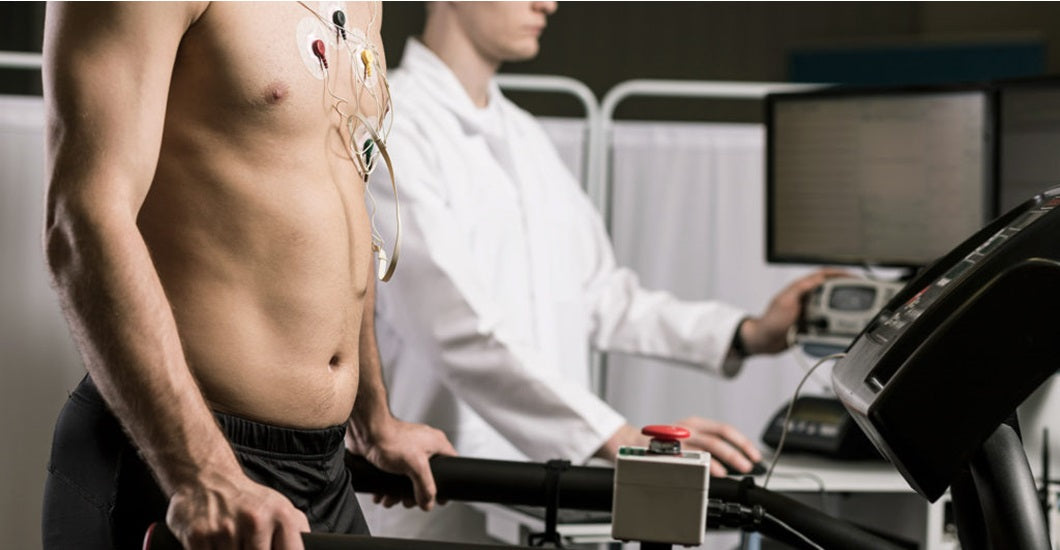In an age where health and well-being take center stage, understanding the importance of a treadmill stress test is paramount. Whether you're an individual striving for a heart-healthy life or a healthcare professional seeking to shed light on the significance of this diagnostic tool, this article is your comprehensive guide to mastering the art of passing a treadmill stress test.
The Treadmill Stress Test, also known as the Exercise Stress Test or Cardiac Stress Test, is a non-invasive examination that evaluates the performance of your heart when subjected to increased physical activity. This test has proven to be an invaluable tool in diagnosing a wide range of cardiac conditions and is an essential step in gauging cardiovascular health.
In this article, we will delve into the intricacies of the Treadmill Stress Test, providing a detailed roadmap to ensure your success in this crucial assessment. From understanding the test's purpose and significance to preparing for the examination day and interpreting its results, we've got you covered.
You will also discover tips and strategies to help you improve your test performance, manage common challenges, and embrace the post-test journey toward a healthier heart. Additionally, we will address frequently asked questions to demystify the process and empower you with the knowledge needed to take control of your heart health.
What is the Treadmill Stress Test?
What is the Treadmill Stress Test?
The Treadmill Stress Test, also known as the Exercise Stress Test or Cardiac Stress Test, is a diagnostic procedure designed to evaluate the performance of the heart under increased physical stress. It involves monitoring various cardiovascular parameters while the patient walks or runs on a treadmill at progressively increasing speeds and inclinations.
The primary purpose of a Treadmill Stress Test is to assess the heart's ability to respond to stress and to identify any underlying cardiovascular issues, especially those that might not be apparent during rest. This test serves several essential purposes:
- Diagnosis of Coronary Artery Disease (CAD):
It is commonly used to detect CAD, a condition characterized by the narrowing of the coronary arteries that supply blood to the heart muscle. CAD can lead to chest pain (angina) and increase the risk of heart attacks.
- Assessment of Exercise Capacity:
The test measures a patient's exercise tolerance, providing valuable information about their fitness level and the heart's response to physical activity.
- Evaluation of Heart Rhythm:
The test can identify irregular heart rhythms (arrhythmias) that may only become evident during exercise.
- Monitoring the Effects of Treatment:
Treadmill Stress Tests can be used to assess the effectiveness of medical treatments, lifestyle modifications, or interventions like angioplasty or stent placement in patients with known heart conditions.
- Risk Stratification:
The results of the test help determine an individual's risk of developing future heart-related complications.
When and Why It Is Performed:
The Treadmill Stress Test is performed under various circumstances and for different reasons, including:
- Symptoms of Chest Pain or Angina:
When a patient experiences chest pain, pressure, or discomfort (angina) during physical activity, a stress test can help diagnose the presence of CAD.
- Risk Assessment:
For individuals with risk factors such as a family history of heart disease, high blood pressure, high cholesterol, or diabetes, the test can assess the risk of developing heart problems.
- Preoperative Evaluation:
Some surgical procedures, such as non-cardiac surgeries, may require an evaluation of a patient's cardiovascular fitness to determine if they can tolerate the stress of surgery.
- Monitoring Progress:
Patients with known heart conditions may undergo periodic stress tests to monitor the effectiveness of treatments and to assess their overall cardiovascular health.
- Occupational or Fitness Assessments:
In some cases, employers or fitness professionals may require a stress test to assess an individual's physical fitness and ability to perform specific tasks.
The Treadmill Stress Test is a valuable tool in the diagnosis and management of heart-related conditions, providing healthcare providers with crucial insights into the heart's functionality and a patient's overall cardiovascular health.
Preparing for the Treadmill Stress Test
Preparing for the Treadmill Stress Test
Before undergoing a Treadmill Stress Test, it's important to be adequately prepared. Following pre-test guidelines and restrictions is essential to ensure the accuracy of the test results and your safety. Here are some key considerations:
- Medications:
Inform your healthcare provider about all the medications you are currently taking, especially heart-related medications. In some cases, your doctor may ask you to temporarily discontinue specific medications before the test.
- Clothing:
Wear comfortable workout attire and supportive athletic shoes suitable for walking or running on a treadmill. Avoid clothing with metal zippers or buttons, as they may interfere with the electrocardiogram (ECG) monitoring.
- Hydration:
Drink plenty of water in the hours leading up to the test. Staying well-hydrated is essential for accurate blood pressure monitoring and overall test safety.
- Avoid Caffeine and Tobacco:
Refrain from consuming caffeine or nicotine-containing products for at least 4-6 hours before the test, as these substances can affect your heart rate and blood pressure.
- Fasting:
It's generally advisable to have a light meal at least two hours before the test. However, avoid heavy, high-fat, or large meals immediately before the test, as they can make you feel uncomfortable during the exercise.
- Rest:
Get a good night's sleep before the test. Fatigue can affect your performance and test results.
- Notify the Technician:
Inform the technician or healthcare provider if you have any medical conditions or concerns, such as arthritis, recent surgeries, or any symptoms like chest pain or shortness of breath. They need to be aware of your specific situation to conduct the test safely.
Dietary Considerations:
Diet plays a role in your readiness for a Treadmill Stress Test. Here are some dietary considerations to keep in mind:
- Light Meal:
As mentioned earlier, have a light meal about two hours before the test to provide you with energy without causing discomfort during exercise. Opt for foods that are easy to digest, such as whole grains, lean proteins, and fruits.
- Hydration:
While staying well-hydrated is essential, avoid excessive fluid intake immediately before the test to prevent discomfort. Sip water in moderation to quench your thirst.
- Alcohol and High-Sugar Foods:
Avoid alcohol and high-sugar foods in the hours leading up to the test, as they can cause fluctuations in blood sugar and may affect your performance.
- Caffeine and Tobacco:
As mentioned earlier, steer clear of caffeine and tobacco products in the hours before the test to prevent any interference with your heart rate and blood pressure.
- Fasting:
If you're scheduled for a fasting stress test (one in which you need to abstain from food for a specific period), follow your healthcare provider's instructions closely to ensure accurate results.
By following these pre-test guidelines and dietary considerations, you can maximize the accuracy of the Treadmill Stress Test results and ensure your safety throughout the procedure. Always consult with your healthcare provider to receive personalized instructions tailored to your specific situation and medical history.
FAQ of "How To Pass A Treadmill Stress Test?"
- What is a Treadmill Stress Test, and why is it performed?
A Treadmill Stress Test, also known as an Exercise Stress Test, is a diagnostic procedure to evaluate how well your heart responds to physical stress. It's performed to diagnose heart conditions, assess exercise tolerance, and monitor heart health.
- Is a Treadmill Stress Test painful or uncomfortable?
The test itself is not painful, but it can be physically demanding. You'll be required to walk or run on a treadmill while the intensity gradually increases. Most people experience fatigue, shortness of breath, and an increased heart rate, but it's generally not painful.
- How do I prepare for a Treadmill Stress Test?
Preparation involves following guidelines provided by your healthcare provider, which may include abstaining from caffeine and nicotine, wearing appropriate clothing, staying hydrated, and following dietary recommendations.
- What happens during the Treadmill Stress Test?
During the test, you'll walk or run on a treadmill, and your heart's activity will be continuously monitored through electrocardiography (ECG or EKG). The treadmill's speed and incline will gradually increase to stress your heart.
- How long does the test take to complete?
The test typically lasts around 15-20 minutes, including both the exercise and the recovery period.
- What are the possible outcomes of a Treadmill Stress Test?
The outcomes can vary. Your test may be considered normal, showing no signs of heart problems. Alternatively, it could indicate abnormalities in heart rate, rhythm, or blood pressure, which may warrant further evaluation.
- What should I do if I have an abnormal test result?
If the test results are abnormal, your healthcare provider will discuss the findings with you and recommend additional diagnostic tests or treatment options based on your specific situation.
- Can anyone fail a Treadmill Stress Test?
There is no pass or fail in a Treadmill Stress Test. The purpose is to provide information about your heart's function and potential issues. Abnormal results do not mean you have failed; they guide healthcare professionals in making informed decisions about your care.
- Are there any risks associated with the test?
While the test is generally safe, there are slight risks associated with it, including the possibility of chest pain, heart palpitations, or fainting. However, these risks are rare and closely monitored by trained healthcare professionals.
- Can I take medications on the day of the test?
Your healthcare provider will provide specific instructions about whether you should take your regular medications on the day of the test. In some cases, they may ask you to hold off on certain medications.
- Is a Treadmill Stress Test suitable for everyone?
Not everyone may be a suitable candidate for this test. Your healthcare provider will evaluate your medical history and specific conditions to determine if a Treadmill Stress Test is appropriate for you.
Remember that these FAQs provide general information, and it's essential to consult with your healthcare provider for personalized guidance regarding your Treadmill Stress Test and any specific concerns you may have.
Conclusion
In conclusion, embarking on the journey of passing a Treadmill Stress Test is more than just a medical assessment; it's a pivotal step towards understanding and safeguarding your heart health. This comprehensive guide has provided you with the knowledge and tools needed to prepare for, undergo, and interpret the results of this valuable diagnostic procedure.
We've explored the definition and purpose of the Treadmill Stress Test, delving into its significance as a diagnostic tool for coronary artery disease, exercise capacity assessment, and heart rhythm evaluation. Understanding when and why this test is performed has shed light on its versatility in diagnosing heart conditions and managing overall cardiovascular health.
We've discussed the importance of proper preparation, from following pre-test guidelines and restrictions to making dietary considerations, and ensuring that you're physically and mentally ready to take on the challenge of the treadmill. This preparation is key to the accuracy of the test results and your comfort during the procedure.
Passing a Treadmill Stress Test is not about simply "passing" or "failing," but rather about gaining insights into your heart's performance and potential issues. Whether your results are normal or abnormal, they provide a roadmap for your future heart health journey, guiding your healthcare provider in making informed decisions about your care.
We've also addressed common concerns and questions about the test, offering clarity and reassurance to those considering or undergoing the procedure. Remember that you're not alone in this process, and your healthcare team is there to support you every step of the way.
As you move forward, armed with the knowledge and guidance provided in this article, you have the power to take control of your heart health. By implementing lifestyle changes, adhering to medical advice, and embracing a heart-healthy journey, you can make a significant impact on your overall well-being.
In the grand symphony of life, your heart is the conductor of your health, and passing a Treadmill Stress Test is a harmonious step towards a healthier, happier, and more fulfilled existence. Your heart deserves your attention, and with the insights gained from this guide, you're well-prepared to embrace the path to a heart-healthy future.






Leave a comment
All comments are moderated before being published.
This site is protected by hCaptcha and the hCaptcha Privacy Policy and Terms of Service apply.